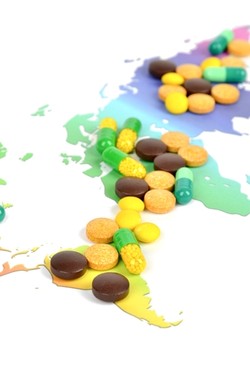WHA mechanism on falsified drugs gaining momentum?
Phil Taylor, 03-Mar-2015
 A World Health Assembly-led initiative to tackle the trade in falsified and substandard medicines is starting to progress.
A World Health Assembly-led initiative to tackle the trade in falsified and substandard medicines is starting to progress.
The World Health Organization (WHO) executive board met in January to agree an agenda for the WHA in May, with one session focusing on the member state mechanism (MSM) on so-called substandard/spurious/falsely-labelled/falsified/counterfeit medical products (SSFFCs), with a view to signing off on a technical report and work plan drawn up last year.
One of the main conclusions was that a review of the mechanism by the WHA - due to take place in 2016 - should be postponed by one year.
The cumbersome SSFFC terminology has resulted from years of wrangling about the use of the word 'counterfeit' and allegations that - as a term associated with intellectual property rights - its use could lead to a conflation with legitimate generic drugs.
The parties involved in the MSM have decided on a workplan and within that have included factors such as good distribution practices (GDP), according to a spokesperson for WHO, who noted that supply chain issues are increasingly being recognised as an important factor in the fight against SSFFCs.
After considerable discussion, it has been agreed that oversight of the supply chain should also extend to starting materials such as active pharmaceutical ingredients (APIs) and inactive pharmaceutical excipients.
The workplan agreed for 2014-2015 are as follows:
a) Develop recommendations for the health authorities engaged in the detection of SSFFCs and establish a strengthening and tool-generating programme to contribute to member states' training (led by Brazil);
b) Create a focal point network for the exchange of information and consultation at large among member states and establish an ongoing virtual exchange forum (supported by Switzerland and the UK);
c) Establish a working group to survey the technologies, methodologies and 'track and trace' models in place and to be developed to analyse their advantages and disadvantages and to survey the available authentication and detection technologies and methodologies and analyse their advantages and disadvantages (led by Argentina);
d) Identify WHO areas working on the issue of access to quality, safe, efficacious and affordable medical products and request a report on the current state of affairs;
e) Create a working group to develop and leverage existing recommendations for effective risk communication and recommendations for awareness campaigns on SSFFC medical products and related actions, activities and behaviours;
f) A proposal for a study on the public health and socio-economic impact of SSFFC medical products (led by the secretariat); and
g) Governance, management and secretariat costs to support the above activities.
After several years of highly-charged and politicised debate on SSFFCs at the WHA, it is encouraging to see that work is starting on the technical aspects of developing the MSM.
Related articles:

©
SecuringIndustry.com




 A World Health Assembly-led initiative to tackle the trade in falsified and substandard medicines is starting to progress.
A World Health Assembly-led initiative to tackle the trade in falsified and substandard medicines is starting to progress.